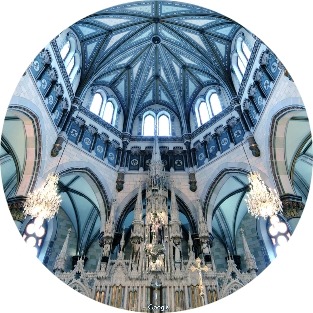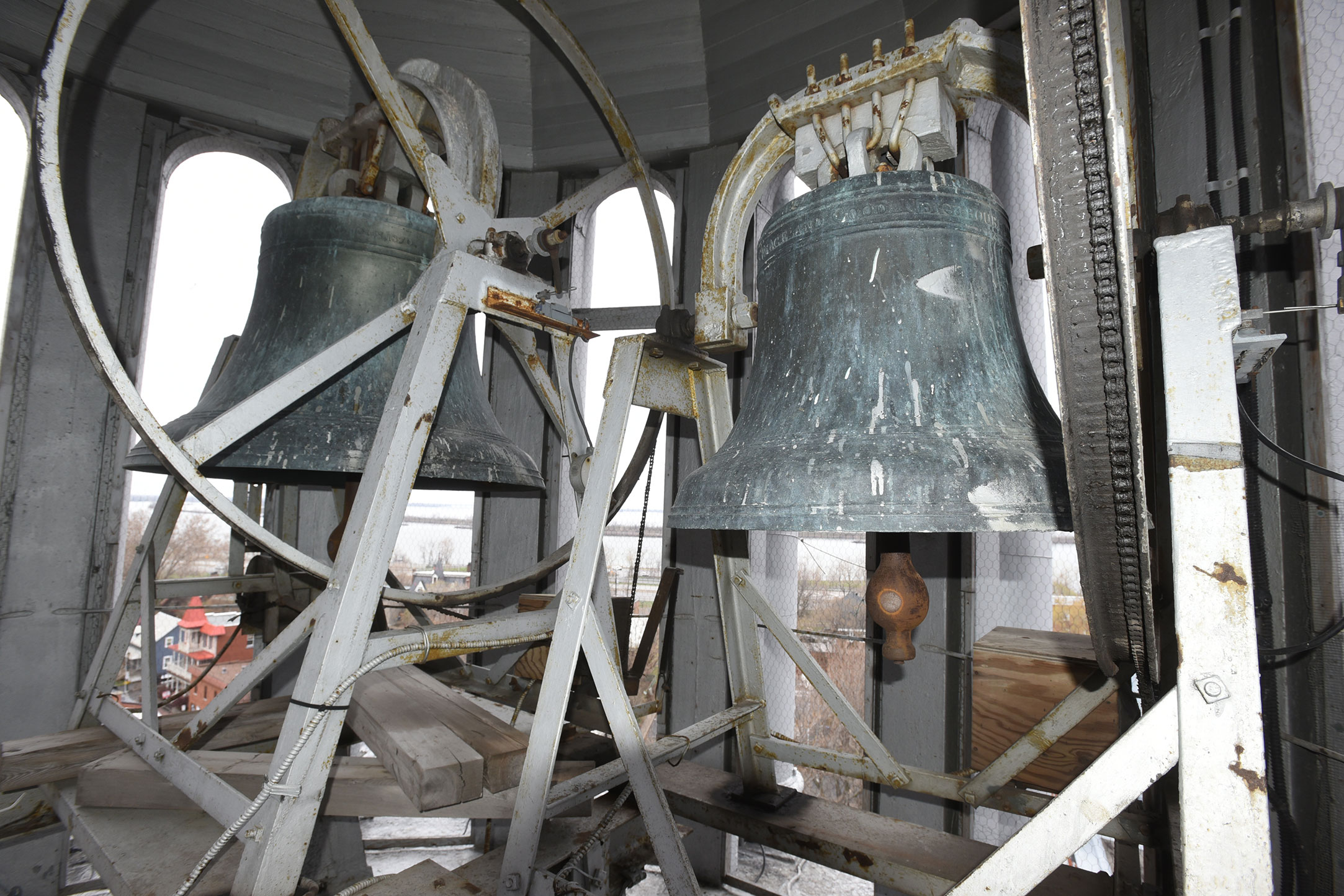
It dates from 1767. It weighs some 600 pounds (nearly 275 kilos). And it’s still ringing!
The present bell tower of La Nativité church has a total of four bells, one of which was salvaged from the old church on the same site. And when it rings, the sound you hear is, well, the original sound that our great-ancestors (at least, those who lived in Laprairie) heard.
Indeed, this bell, one of the oldest still in use in Quebec, remains in its original state. It has never been recast or remodeled. And – a miracle of the technology of the time – it has never needed anti-wrinkle cream.
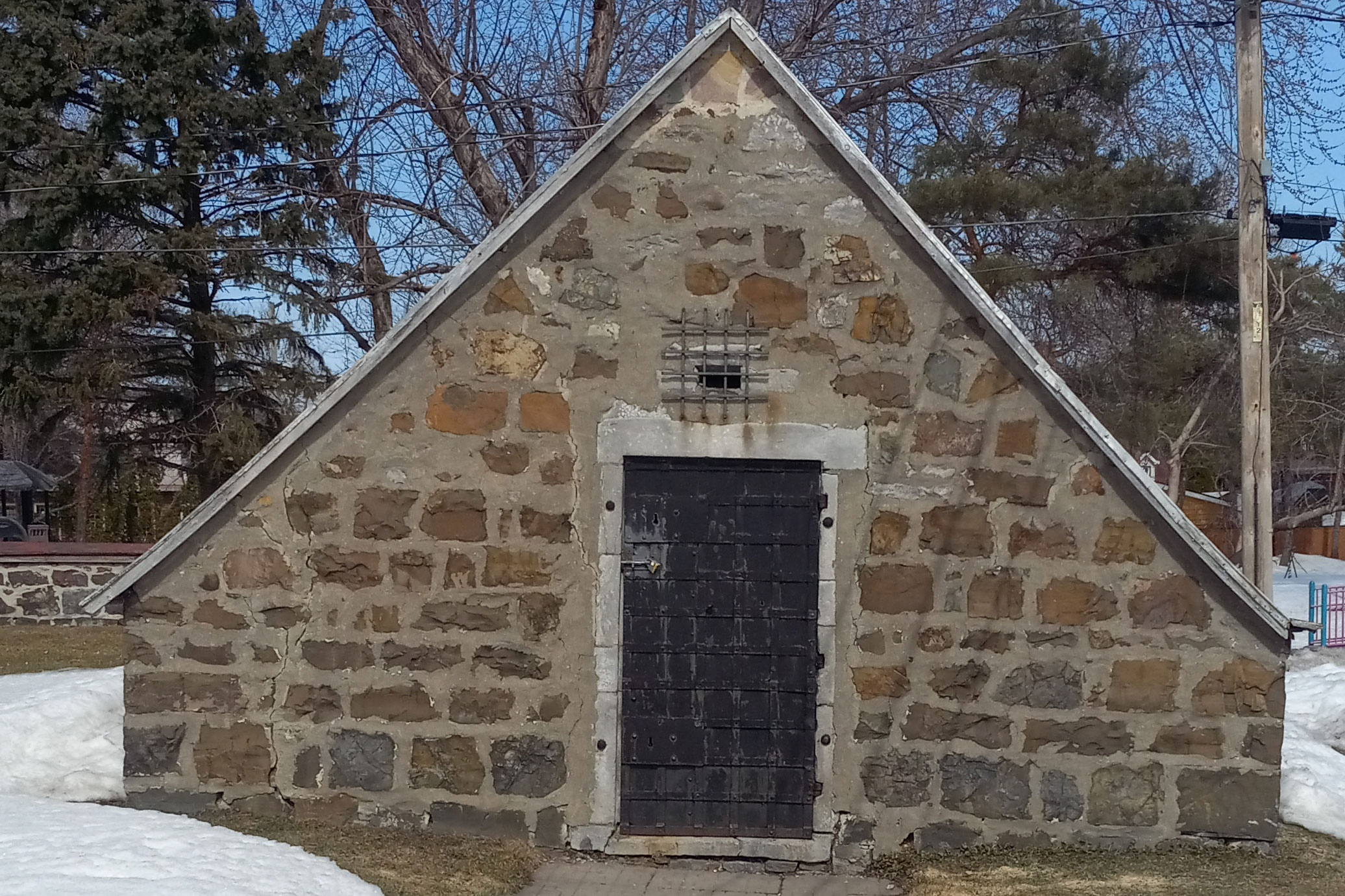
As we all know, you can’t bury a coffin in the cemetery in winter. So the body is kept refrigerated until warmer weather arrives. But what was done in those days, before the invention of electricity? In the case of La Nativité church (as elsewhere), bodies were placed in what was called a charnel house (what a sad choice of word).
Well, guess what? That mass grave still exists. You can see it to the right of the church. But don’t worry: for a long time now, it’s only been there to be admired. And to shudder to think of those who had to clear the place out come spring…
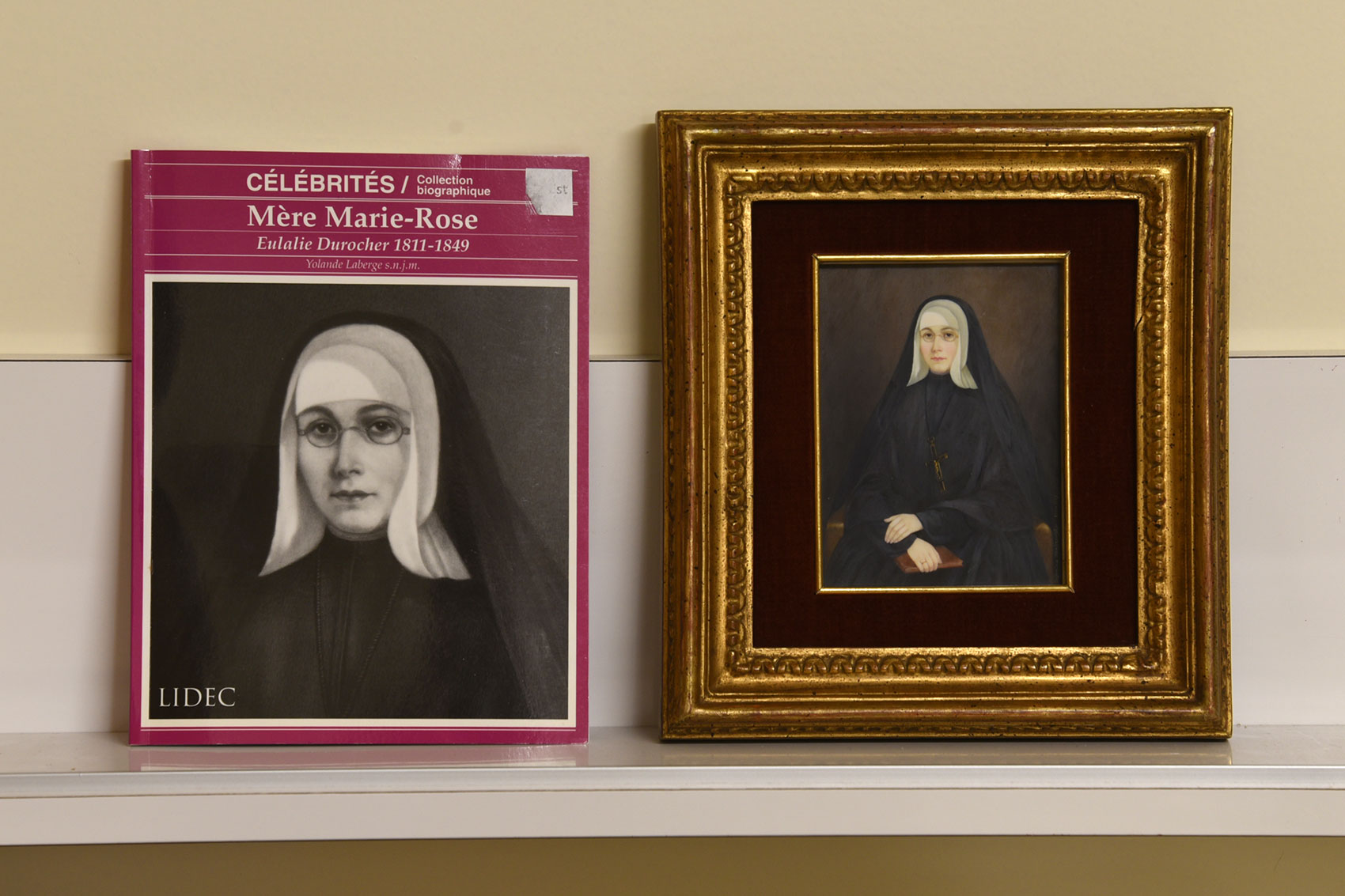
The expression “within a hair’s breadth”, which means to come very close to something, takes on a fascinating meaning when it comes to a miniature portrait of Mother Marie-Rose by Polish artist Casimira Dabrowska, which can be admired during a visit to the Center.
Renowned for her work on the Vatican stamps, the miniaturist was asked by the SNJM sisters in Rome to create a portrait of the Blessed (now deceased) that would do her more justice than the one painted by Théophile Hamel when she was seriously ill (see separate text).
So, in order to produce an image that would be faithful to the luminous woman Marie-Rose was during her lifetime, Dabrowska used photos of Hamel’s canvas as a reference, a 4 x 6″ ivory surface, and a brush… with only one hair. And lots and lots of patience and precision.
The result was so convincing and successful that it was used to produce posters for Marie-Rose’s beatification in 1982.
A larger-than-life woman immortalized… in miniature.
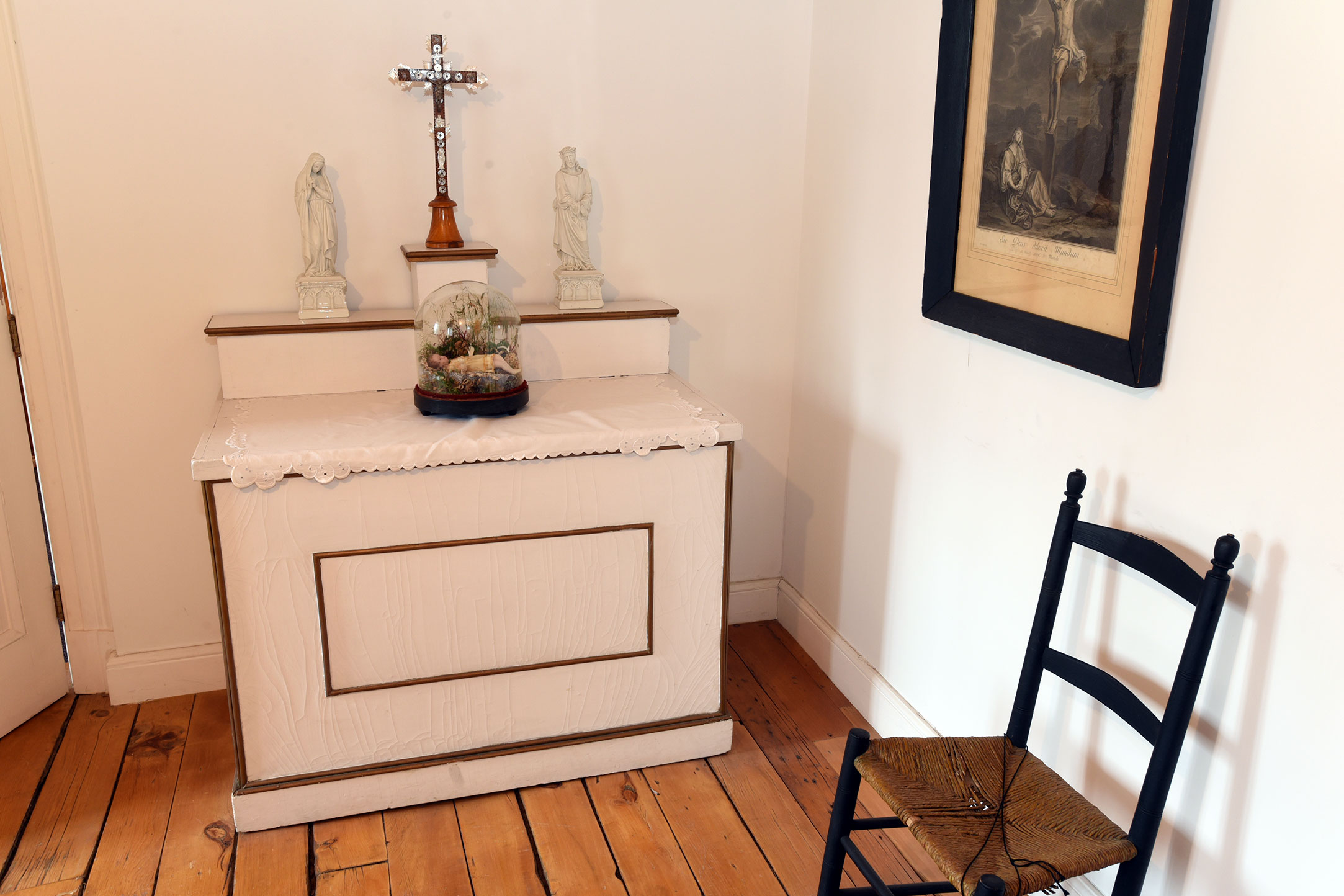
For the nuns of the Foundation House, moving to a bigger place meant much more than moving from a 4 ½ to a 5 ½. The year was 1844. All preparations are made for the move to a vast adjacent building, converted into a convent. That’s tomorrow. Nothing has been forgotten. Except…
Catastrophe: at the last minute, it is discovered that there is no altar in the convent. Unthinkable in those days, especially for such devout women. So, accompanied by the chaplain and sacristan, they set about building a makeshift altar in a single night.
This rudimentary piece of furniture, made of wood and painted white, still exists today. It is located in the chapter house, a historic room that can be visited at the Centre Marie-Rose.
A piece of prayer furniture that answered a first prayer: to be ready in time for the move.
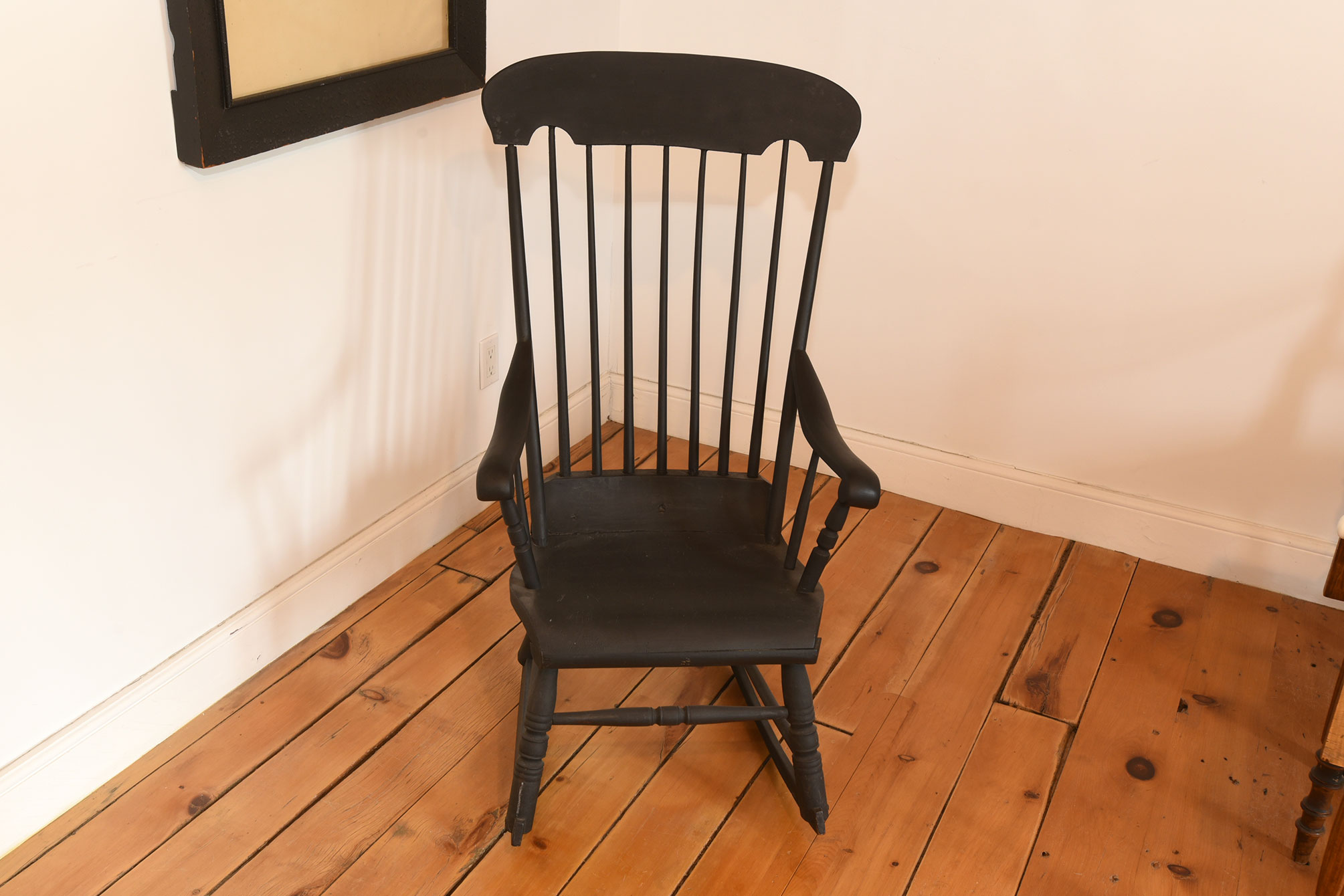
A chair is usually a rather ordinary object. But what if you learned, for example, that it was the chair on which the Mona Lisa sat? On a less da Vinci-esque level, the Centre Marie-Rose has such a piece of furniture of great heritage value.
The Congregation’s archives contain the only canvas ever painted by Mother Marie-Rose, who had always refused to pose in this way. It was at the request of Mgr Bourget himself that she finally agreed – even though she was gravely ill. The work was created by the artist Théophile Hamel.
The Blessed appears weak and rather pale (the nuns even had to hold her down to prevent her collapsing to the ground). We see her seated on a rocking chair, which she used extensively during her lifetime.
While you can’t see the portrait itself during a visit to the Center, you can still admire the famous chair that rocked Mother Marie-Rose practically until her death in October 1849 – just a short time after it was immortalized in paint.
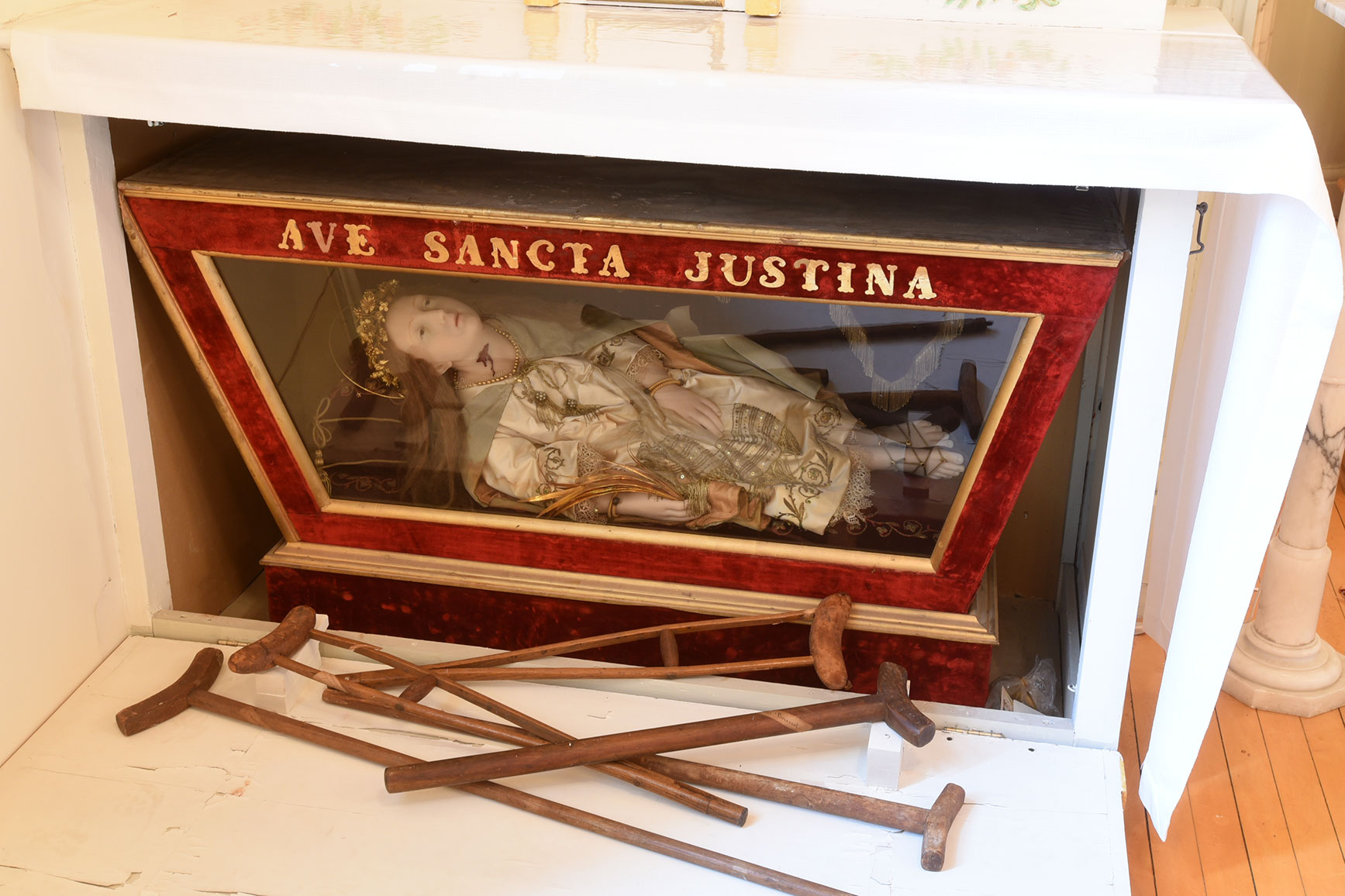
To visit places like the chapel of the Maison de la Congrégation is to let history tell fascinating stories. Like this one: beneath the altar of the Virgin, in the chapel, lies the wax recumbent of a martyr, Saint Justine, protector of children, whose remains were brought here from Rome in 1856. The recumbent statue contains the real bones of the young saint.
The story goes that a family named Lacoste, whose eldest daughter was seriously ill, came to pray before the recumbent statue to ask Saint Justine to save the child, promising to name their next daughter after her in exchange for a miracle. The miracle happened, and the family’s sixth child, a girl, grew up to become Justine Lacoste-Beaubien. And who is Justine Lacoste-Beaubien? The co-founder of Sainte-Justine Hospital in Montreal. A place that, in turn, works miracles to save young children.
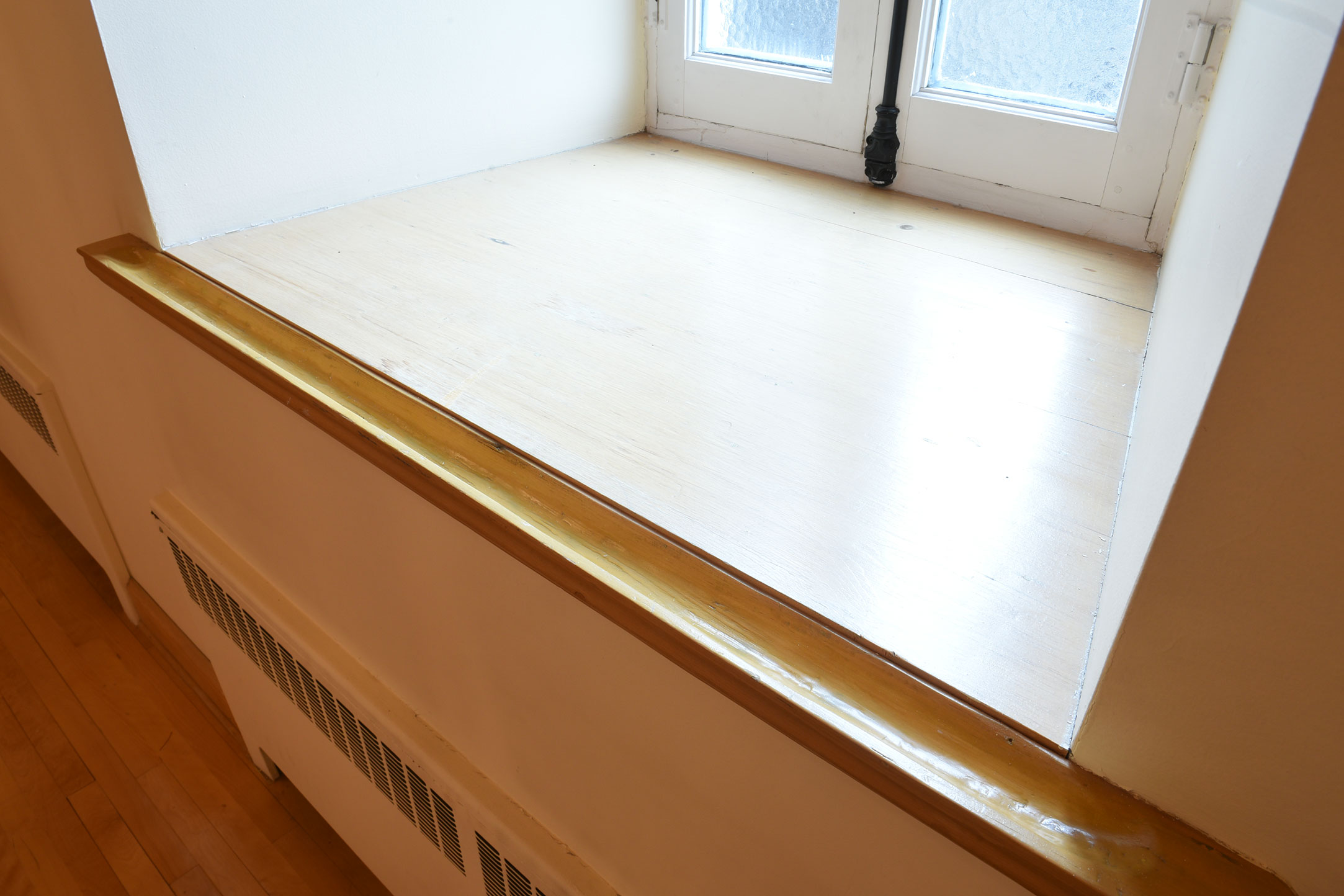
A trip back in time, such as a visit to the chapel of the Maison de la Congrégation, is an opportunity to appreciate the remarkable resourcefulness and extraordinary methods employed to carry out work before the advent of technological progress.
Take the windows, for example. The chapel is located in what was once (and by once, we mean around 1794) a windowless shed. When it was converted into a place of worship in 1846, it obviously became necessary to let in some natural light. Craftsmen with rudimentary tools were called in to cut openings in the two-foot-thick stone walls and install ogee windows.
An interesting detail: at the bottom of these windows are wooden troughs, literally hollowed out with a knife, whose function was to collect rainwater and condensation to protect the walls and floors.

Visiting the historic Foundation House near the Centre Marie-Rose, one thing is immediately obvious: it’s small. And when you consider that at one time, up to 73 people (teaching sisters and students) could live there, it’s very small indeed. A situation that gave full meaning to the term “space optimization”.
The boarders and sisters slept upstairs (teachers on one side, students on the other). The straw mattresses were stored above in the attic. Obviously, there was no question of installing a staircase, which in such a situation would probably have taken the place of ten beds.
The solution: a pulley ladder, which opened a trapdoor in the ceiling to access the straw mattresses. A mechanism that can still be admired today when visiting the house.
Needless to say, as the attic was not insulated, these mattresses must have been particularly, shall we say, refreshing in winter?

If you’ve ever complained about a dripping faucet or a clogged sink, you’ll be able to put things into perspective when you admire a remarkable original piece in the Fondation home: a water stone.
A sort of ancestor of today’s washbasin, it’s actually a basin dug out of a stone and filled with water (which might explain why it was called a water stone. We say that too). This water came from a well, and the vat was filled by hand. A hole was drilled in the bottom and, by removing a plug, the water was drained directly outside via a gutter dug into the stone.
The only sink in the Foundation house, the water stone was used by the sisters, among other things, to wash vegetables and dishes. Ideally not at the same time.
